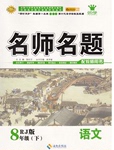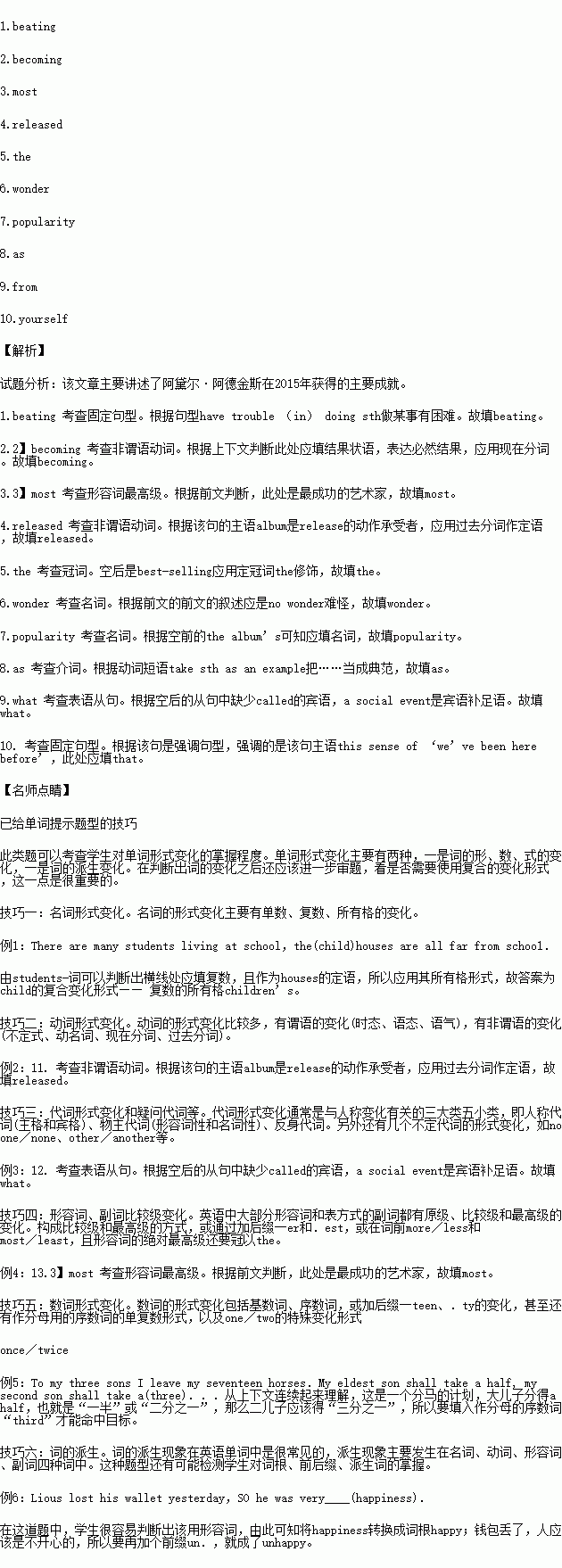题目内容
语法填空
阅读下列材料,在空白处填入适当的内容(一个词)或括号内单词的正确形式
In 2015, Adele Adkins(阿黛尔·阿德金斯) said “hello” to her greatest achievement yet. Despite giving every other musician an 11-month head start, she had no trouble ____1.___(beat) the competition, ____2.____ (become) not only the year’s most talked-about artist, but also its ___3.__ successful one. Her third album, 25, ___4.____ ( release) on Nov 20, not only broke a record for one-week album sales in just over three days, but also sold more than US singer Taylor Swift’s 1989 to become ____5.____ best-selling album of 2015. No ___6.___ USA Today named Adele “Musician of the Year” on Dec 28.
So what is behind the album’s ____7.____ (popular)? First and foremost, the 27-year-old British singer has “an awe-inspiring voice that shows her genuine talent”, wrote The Christian Science Monitor. But her directness is also a huge part of her appeal(魅力). As the Chicago Tribute commented, “Adele sings about her personal struggles” with emotional lyrics (歌词) that invite everyone into her world.
Take the album’s hit single Hello ___8.___ an example. Adele has connected with people this tear-stained(泪痕斑斑的)song because, as the Chicago Tribute (芝加哥论坛报) put it, “who doesn’t need a good cry once in a while?” Music, after all, is ___9.__ Chris Ferguson, an associate professor of psychology at Stetson University in Florida called “a social event.” The pain in her songs satisfies everyone’s need for love. “It is this sense of ‘we’ve been here before’ ___10.___ makes Adele,” said the Chicago Tribute.
 优学名师名题系列答案
优学名师名题系列答案

 ecks.
ecks. life, you should take acting courses and win Oscars.
life, you should take acting courses and win Oscars.